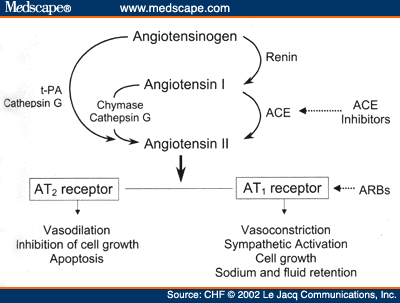ACE Inhibitors represent the first class of anti hypertensive agents that was designed and developed on the basis of a well-defined physiopathological axis of arterial hypertension, a vascular disorder that is now becoming one of the major causes of morbidity/mortality, not only in developed societies but also in the highly populated developing countries.
ACE Inhibitors can be divided into three groups based on their molecular structure:
- Sulfhydryl-containing agents:
- Captopril , the first ACE inhibitor
- Dicarboxylate-containing agents:
- Enalapril
- Ramipril
- Quinapril
- Perindopril
- Lisinopril
- Benazepril
- Phosphonate-containing agents:
- For high blood pressure: Benazepril, Enalapril, and Lisinopril
- For heart failure: Captopril, and Enalapril
- After a heart attack: Lisinopril
- For diabetics: Ramipril
- For people with kidney disease: Benazepril, and Ramipril
Certain agents in the ACE inhibitor class have been proven, in large clinical studies, to reduce mortality post-myocardial infarction, prevent development of heart failure, etc. The ACE inhibitor most prominently recognized for these qualities is Ramipril. Because Ramipril has been shown to reduce mortality rates even among patient groups not suffering from hypertension, there are some (mostly drug reps) who believe that Ramipril s benefits may extend beyond those of the general abilities it holds in common with other members of the ACE inhibitor class.
PAngiotensin II is known to have the following effects:
- Vasoconstriction (narrowing of blood vessels), which may lead to increased blood pressure and hypertension
- Constriction of the efferent arterioles of the kidney, leading to increased perfusion pressure in the glomeruli.
- Ventricular remodeling of the heart, which may lead to ventricular hypertrophy and CHF
- Stimulate the adrenal cortex to release aldosterone, a hormone that acts on kidney tubules to retain sodium and chloride ions and excrete potassium. Sodium is a "water-holding" molecule, so water is also retained, which leads to increased blood volume, hence an increase in blood pressure.
- Stimulate the posterior pituitary into releasing vasopressin (also known as anti-diuretic hormone (ADH)) which also acts on the kidneys to increase water retention.
- Decrease renal protein kinase C
ACE inhibitors lower the arteriolar resistance and increase venous capacity leading to increased cardiac output , cardiac index, stroke work and volume, lowering the renovascular resistance, and lead to increased natriuresis (excretion of sodium in the urine). ACE inhibitors therefore block the conversion of Angiotensin I to Angiotensin II.
Epidemiological and clinical studies have shown that ACE inhibitors reduce the progress of diabetic nephropathy independently from their blood pressure-lowering effect. [2] This action of ACE inhibitors is utilized in the prevention of diabetic renal failure.
ACE inhibitors have been shown to be effective for indications other than hypertension even in patients with normal blood pressure. The use of a maximum dose of ACE inhibitors in such patients (including for prevention of diabetic nephropathy, congestive heart failure, prophylaxis of cardiovascular events) is justified because it improves clinical outcomes, independent of the blood pressure lowering effect of ACE inhibitors. Such therapy, of course, requires careful and gradual titration of the dose to prevent the effects of rapidly decreasing blood pressure (dizziness, fainting, etc).

ACE Inhibitors Contraindications:
The ACE Inhibitors are contraindicated in patients with:
- Previous angioedema associated with ACE inhibitor therapy
- Renal artery stenosis (bilateral, or unilateral with a solitary functioning kidney)
- Hypersensitivity to ACE inhibitors
- Impaired renal function
- Aortic valve stenosis or cardiac outflow obstruction
- Hypovolemia or dehydration
- Hemodialysis with high flux polyacrylonitrile membranes
| Active | Form | Strength | Packing Type | Packing style |
| Amlodipine + Enalapril | Tablets | 5mg + 5mg | Strip | 10's |
| Amlodipine + Ramipril | Tablets | 5mg + 2.5mg | Blister | 10's |
| Captopril | Tablets | 12.5mg, 25mg | Blister | 10's |
| Hydrochlorthiazide + Ramipril | Tablets | 12.5mg, 2.5mg | Blister | 10's |
| Ramipril | Tablets | 2.5mg, 5mg | Blister | 10's |
1 comment:
Most of our products can be supplied ranging from milligrams to kilograms scale and arrived with analytic report. small molecule inhibitors
Post a Comment